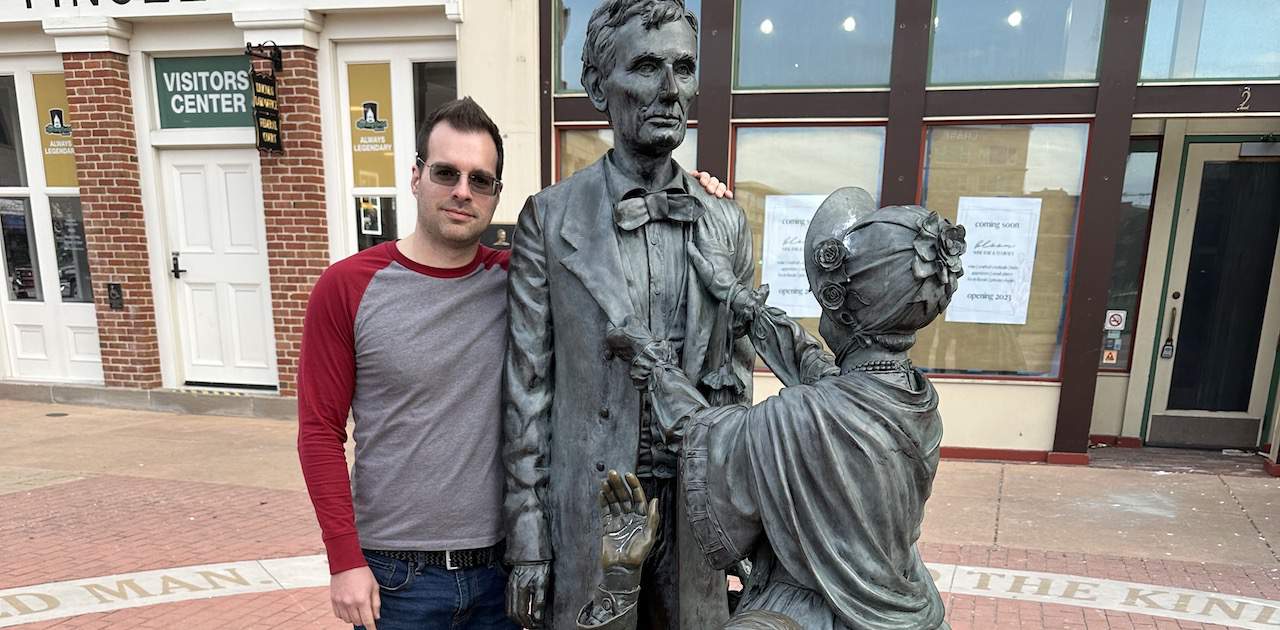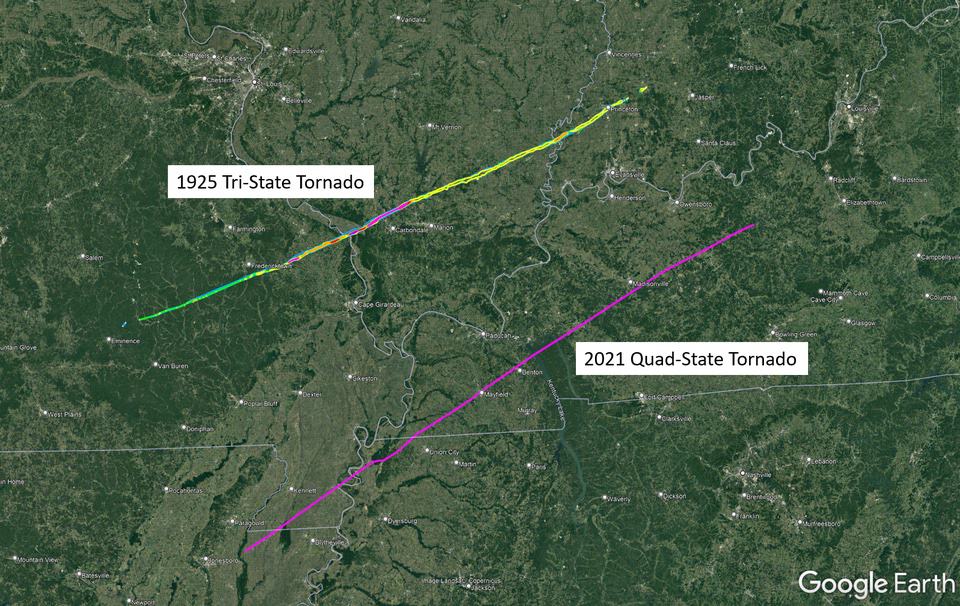It was warm on this day 97 years ago in much of Missouri, Illinois, and Indiana. Some said it was downright muggy. There was a little rain that morning, but by lunch school children shed their jackets and ran outside to play. Miners, train engineers, and highway workers were glad for the break from winter. Around 1 o’clock, however, what one encyclopedia called The Great American Tornado struck.
We call this the Tri-State Tornado of 1925, as if there are many other tri-state tornadoes to recant. Southern Illinois was struck hardest, but the overall storm produced mind-boggling records. Some we’re sure of, some we’re less sure of.
- We’re pretty sure this tornado holds the record of longest-track. The 2021 Mayfield tornado hasn’t officially been recorded. The Tri-State of 1925 was 219 miles long, but may have been closer to 224 based on some theories the storm may have touched down earlier than thought west of rural Ellington, MO. There is little debate one funnel was on the ground for 219 miles, there is some debate the earlier 4-5 miles may have been another funnel, or that it skipped up briefly. We’ll probably never know for sure.
- The Tri-State Tornado is still the most “extreme”, with winds that are formally an F5, but most scientists agree the wind speeds were likely closer to 320 MPH at times. Winds at that speed would be more like an F6, which is considered “an inconceivable tornado” on the Fujita scale. No formal measurements are available, but estimates are based off destruction like how far a train car can be blown or moved.
- It holds the record for longest duration, at over 3.5 hours. The storm also produced a family of tornadoes toward the end of its life that don’t count toward that 3.5 hours, but does count toward its overall event.
- It’s the third-costliest of all time, which is saying something given the timing. Inflation adjusted, it’s still impressive. You expect a tornado that hits a city today to cost a lot since it’ll destroy expensive items like cars, trucks, computers, etc. In 1925, most people in the path maybe had a car and most of their wealth was tied up in livestock.
- The Tri-State tornado was the fastest tornado ever recorded on earth, with forward speeds at 73 MPH for a portion of its journey and averaging between 55-65 MPH for much of the rest.
The event is just fascinating to me because of its size, and also because of the things people reported:
- There was a distinct “suction” event reported by many people across the tornado’s path. “It lifted me up, then set me down, then lifted me up again.” One man reported his entire basement was sucked up out of the ground a few inches, set back down, and then pulled up again. This theory has some scientific legs because of outflows and pressure changes.
- Almost everyone described it the same way: “It was light, then it was dark, then it was gone.” All in about 30-40 seconds.
- The Tri-State killed 625 and injured thousands more. Which is impressive, again, given the era. The deadliest tornado ever was the Daulatpur–Saturia tornado in Bangladesh on April 26, 1989. It killed about 1,300 people.
I’ve had a lot of fun doing research on this event and continue to do so. The stories of heroism, failures from the Red Cross and others, the way the National Funeral Directors and Morticians Association pushed their members to work double time at no cost is mostly lost to history.
And there are countless stories of all the strange things that happen to people in the path, children torn from their mother’s arms, kids killed in school (more records there, too), and how terrified people were afterwards for years into the future.
If you’d like to support my research, become a Supporter. I need to travel to points along the path soon, and gas, lodging, and food is an expense I’m trying to account for.


